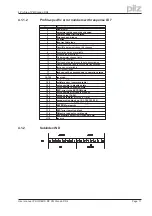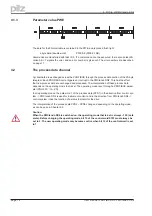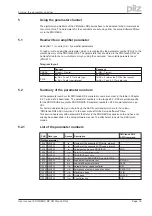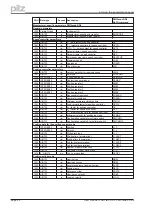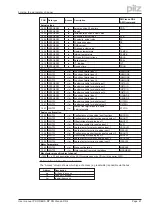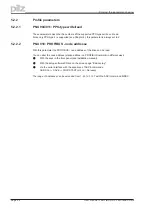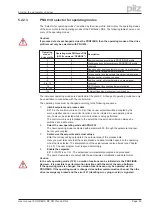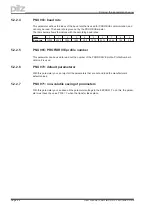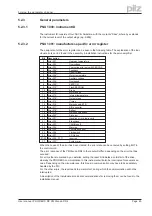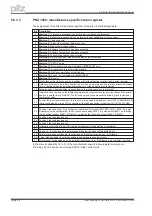
3
Installation / Setup
3.1
Hard- and Software installation
Install and wire up the equipment only while it is electrically dead. Make sure that the
switchgear cabinet is safely isolated (lock-out, warning signs etc.).
The individual supply voltages will not be switched on until setup is carried out.
Residual charges in the capacitors can still have dangerous levels several minutes after
switching off the supply voltage. Measure the voltage in the intermediate (DC-link) circuit
and wait until it has fallen below 40V.
Power and control connections can still be live, even though the motor is not rotating.
Electronic equipment is basically not failure-proof. The user is responsible for ensuring that,
in the event of a failure of the servo amplifier, the drive is set to a state that is safe for both
machinery and personnel, for instance with the aid of a mechanical brake.
Drives with servo amplifiers and PROFIBUS expansion cards are remote-controlled ma-
chines. They can start to move at any time without previous warning. Take appropriate mea-
sures to ensure that the operating and service personnel is aware of this danger.
Implement appropriate protective measures to ensure that any unintended start-up of the
machines cannot result in dangerous situations for personnel or machinery. Software
limit-switches are not a substitute for the hardware limit-switches in the machine.
Install the servo amplifier as described in the installation manual. The wiring for the analog
setpoint input and the positioning interface, as shown in the wiring diagram in the installa -
tion manual, is not required.
Use the valid connection diagram in the amplifier installation manual for the connection to a
PROFIBUS network.
Never break any of the electrical connections to the servo amplifier while it is live. This
could result in destruction of the electronics. Because of the internal representation of the
position-control parameters, the position controller can only be operated if the final limit
speed of the drive at sinusoidal² commutation is not more than 7500 rpm. At trapezoidal
commutation, the permitted maximum speed is 12000 rpm. All the data on resolution, step
size, positioning accuracy etc. refer to calculatory values. Non-linearities in the mechanism
(backlash, flexing, etc.) are not taken into account.
If the final limit speed of the motor has to be altered, then all the parameters that were previ-
ously entered for position control and motion blocks must be adapted.
User manual PROFIBUS DP PMCtendo DD4
Page 11
3 Installation / Setup

















